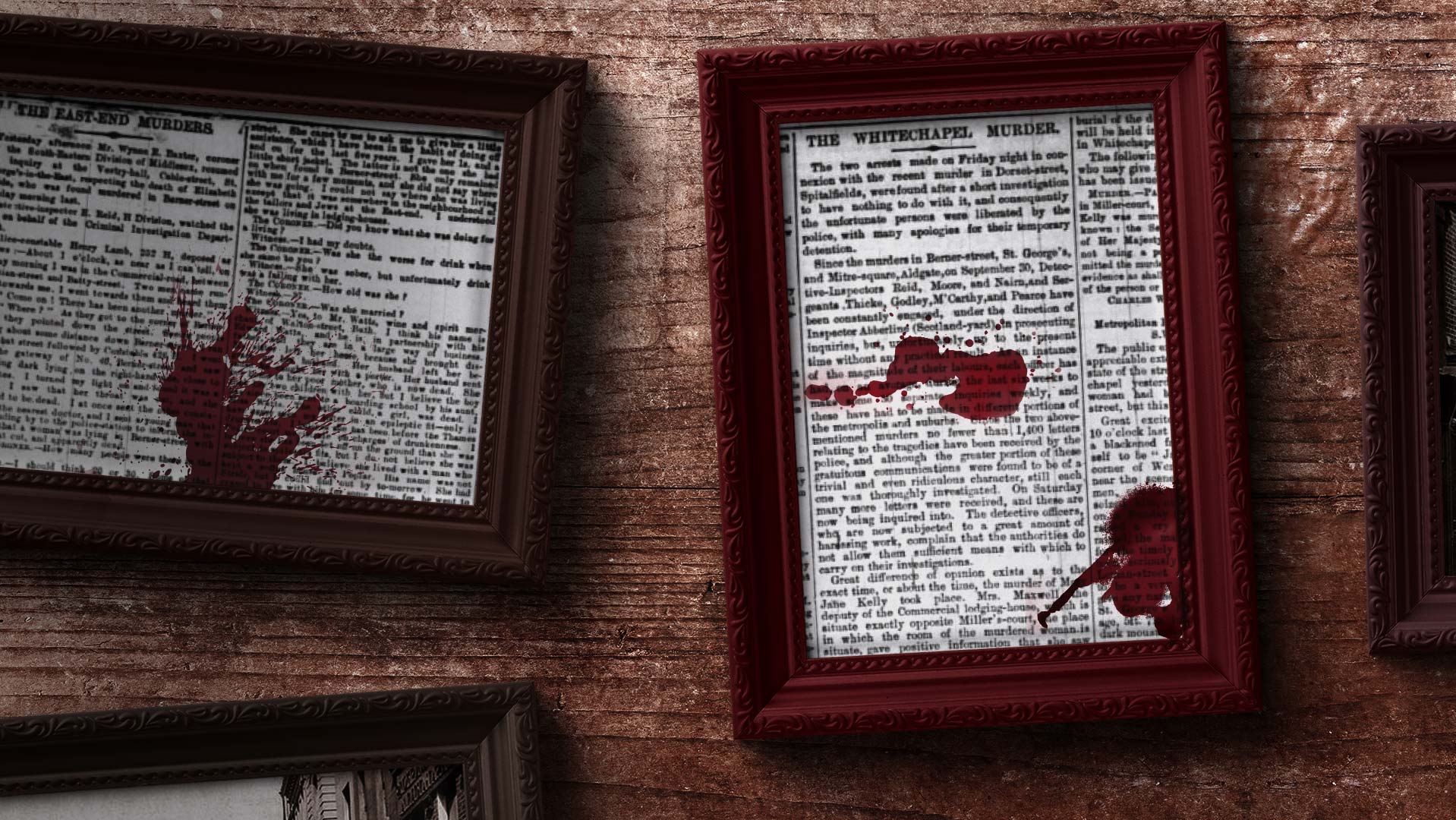In this episode, we’ll learn about historical events that happened this week in history as they were depicted in these movies: Waterloo, The Blue Max, and Hitler: The Rise of Evil.
Events from This Week in History
Birthdays from This Week in History
Movies Released This Week in History
Did you enjoy this episode? Help support the next one!
Disclaimer: Dan LeFebvre and/or Based on a True Story may earn commissions from qualifying purchases through our links on this page.
Transcript
Note: This transcript is automatically generated. There will be mistakes, so please don’t use them for quotes. It is provided for reference use to find things better in the audio.
March 20th, 1815. Paris, France.
We’re inside an elegant building.
There’s a massive staircase that stretches from the right side of the camera’s frame, and lining each side of the staircase are soldiers at attention, as well as other finely dressed men and women.
A single man walks down the stairs, and as he passes by the people on the side of the staircase, they bow to him.
This is King Louis XVIII, who’s played by Orson Welles in the movie.
He’s a large man with a big belly, and he’s wearing a green uniform with two rows of buttons on the front with a light blue sash across his chest.
The rest of the outfit is trimmed in white with a white belt, gloves, knee-high socks, and white hair.
Well, what’s left of it.
In his left arm, he’s holding a big hat, and he’s using a cane in his right hand to help him down the stairs.
From the center of the frame, he reaches the end of the stairs, and five men and a woman appear from either side of the frame to meet him.
Louis hands the cane to one of the men and says, “Perhaps the people will let me go as they let him come.”
He kisses the woman, who sobs on his chest for a moment.
Then he walks past everyone, and they watch him get into a carriage and ride off, followed by some soldiers on horseback.
The true story behind this week’s event depicted in the movie Waterloo
That’s a description of an event shown in the 1970 movie called Waterloo.
The event that I’ve described from the movie is showing the end of King Louis XVIII’s reign, and that happened this week in history on March 20, 1815.
That was the start of what’s known as the Hundred Days.
To give a little more historical context, in October of 1813, Napoleon was defeated by a coalition of forces from Prussia, Austria, and Russia at the Battle of Leipzig.
Then in April of 1814, Napoleon was exiled to the island of Elba.
That’s just off the coast of Italy.
But then in February of 1815, Napoleon escaped and landed in southern France.
He made his way north, and on March 20, 1815, he arrived in Paris.
Many of the French people, military included, welcomed Napoleon back.
So, the “he” that Louis mentioned in the movie when he said he hands his cane to one of the men and says, “Perhaps the people will let me go as they let him come.”
Letting him come, that’s Napoleon.
That’s the person he’s referring to there.
A lot of soldiers deserted and joined Napoleon’s army, enough so that King Louis XVIII himself fled France and ended up in Ghent, Belgium.
But of course, that’s just the start of the story, because even though they couldn’t have known it at the time, Napoleon’s days were numbered.
After all, we can look back on this with a historical lens, and we call it the “Hundred Days” for a reason.
Napoleon ended up being defeated for the final time at the Battle of Waterloo on June 18, 1815.
If you want to see the events that happened this week in history, check out the 1970 movie called Waterloo.
And the scene with King Louis XVIII leaving France is a little after the 26-minute mark.
And if you want to learn more about the true story, check out episode #174 of Based on a True Story, where we take a deep dive into the historical accuracy of that movie.
March 21st, 1918. France.
We’ll stay in France for our next movie and fast forward about 100 years or so to March 21, 1918, and it’s dark in the early morning hours.
Standing on the steps, a little over a dozen German soldiers are staring off in the same direction.
A few of them are puffing on cigarettes.
One of these soldiers looks at his watch.
Then it starts.
Explosions can be heard in the distance as flashes illuminate their faces.
A couple of the soldiers smile at each other and raise their glasses as if to cheer the moment the explosions continuing in the distance.
The camera cuts to a man who opens the window and rests his head on the window frame.
This is the main character of the movie, George Pappard’s version of Lieutenant Brunel’s statue.
Off in the distance, we can see the flashes of light and the sound of explosions as the artillery continues.
In the next scene, the sun is up now, the artillery bombardment is still going on, and lines of British soldiers are hunkered down in the trenches as explosions hit all around.
Then the camera cuts to an airfield where German biplanes are taking to the skies.
Down below, lines of German soldiers are poised in their own trenches with bayonets fixed.
Formations of biplanes above the battlefield start to dive down, and just then the movie cuts back to the German soldiers in the trenches.
One of the men looks at his watch, then fires a flare.
All the soldiers start piling over the top of the trenches and rushing forward.
The true story behind this week’s event depicted in the movie The Blue Max
That’s a description of an event shown in the movie called The Blue Max, which is a film released in 1966.
The event it’s portraying is the start of Operation Michael, which happened this week in history on March 21, 1918.
And while the movie doesn’t really try to show the entire operation, it is correct to suggest that this was a major offensive near Saint-Quentin, France in World War I.
It started similar to how we see in the film, also with artillery in the early morning hours before the sun rose.
And although we see soldiers checking their watches in the movie, it doesn’t mention specific times, but it was at 4.35am when the German artillery bombardment started.
It went on for the next five hours, dropping over 3.5 million shells on the Allied positions, along with mustard gas, chlorine gas, tear gas, and smoke canisters.
We can’t see the time on the German soldiers watching the movie before he fires the flare to signal the men to attack, but we know from history that the infantry started their assault at 9.40am.
With such a massive bombardment, there was a heavy smoke that covered the battlefield the entire day, and coupled with the morning fog, made it tough to see.
Some sources indicate that reports of visibility were as low as 20-30 feet in some places.
The movie is also correct to show airplanes being used as support to ground troops, although that smoke and fog meant that they couldn’t really take off until later in the day.
By the end of the first day of the offensive, about 80,000 men were killed on each side, losing about half that number.
Despite the heavy losses, the artillery bombardment and poor visibility allowed the Germans to push through the Allied lines initially, and with the Germans advancing some 40 miles or so, it proved to be the biggest gains on the Western Front for either side since 1914.
But the German offensive started to stall near the end of March, due mostly to exhaustion of the troops.
On April 2nd, thousands of American soldiers joined the fight in what was the first major deployment of US troops during World War I.
It was such an influx of fresh soldiers into the mix, and that helped push back the weary Germans.
There’s a brief mention in the movie through a line of dialogue from James Mason’s character, General Count von Klugermann, where he announces the offensive to a room of German soldiers and says that if they’re able to destroy the British and French armies before the Americans intervene, effectively they can win the war.
While it’s not specifically mentioned in the movie, that little bit of dialogue probably alludes to the purpose of Operation Michael, which was to break through the Allied lines and separate the French and British forces on the Western Front.
I guess it’s technically true that if the Germans could completely destroy the British and French armies before the Americans intervened, maybe they could have won the war.
But many historians think that the Germans didn’t really expect to be able to win the war by the time March of 1918 rolled around.
If they did, Operation Michael was a failed offensive that cemented the beginning of the end for the Germans in World War I.
Operation Michael came to an end on April 5th, and in those 15 days between March 21st and April 5th, almost a half a million men died, 239,000 Germans and 254,000 Allies.
If you want to watch the start of the offensive that began this week in history, you can find it depicted in the 1966 movie called The Blue Max.
The explosions of the artillery began at about 55 minutes and 35 seconds into the movie.
March 23rd, 1933. Berlin, Germany.
Every seat is filled at the Kroll Opera House.
On one side, all the men are wearing black suits.
On the other, they’re all wearing brown uniforms.
The color differences make for a distinct line down the middle as the camera faces the crowd from behind the man speaking on stage.
Text on the screen tells us this is the temporary Reichstag, and everyone listens quietly as he continues to address them.
Just then, the camera cuts to the other angle, and from his haircut, thin mustache, and brown uniform, it’s pretty clear who the man speaking is, even without seeing the huge red flag with a white circle and a black swastika behind him.
This is Adolf Hitler.
He tells the members of the Reichstag in the audience that in order for the government to carry out the necessary procedures against terrorism, they must support an enabling act, handing power to those who can wield it most effectively.
He goes on to explain what the act will do.
All legislation will be handled by the administration, giving them sole right to make constitutional changes.
Freedoms of speech, association, and the press are suspended.
Privacy rights in relation to telephone and postal communications are revoked.
Looking back at the crowd, we can see a growing murmur and chatter among the men wearing black suits.
All the men in the Nazi brown uniforms are just sitting still.
The true story behind this week’s event depicted in the TV series Hitler: The Rise of Evil
That’s how the TV series called Hitler, the Rise of Evil, portrays the passing of the enabling act, which happened this week in history.
There is one key difference between what we see in the series and the true story, though, and that’s something that I didn’t really touch on because it didn’t happen this week in history, the fire at the Reichstag.
We do see that in the series.
It is heavily implied the enabling act was a part of the Reichstag fire decree.
Those were actually two separate items, although collectively, they were effective in giving Hitler power over Germany.
For a brief timeline of what happened, on January 30, 1933, Hitler was appointed the Chancellor of Germany.
Hitler then tried to get President von Hindenburg to dissolve the Reichstag, or the German parliament, and call for new federal elections to take place on March 5, 1933.
Six days before the election was to take place, the Reichstag building caught fire.
We still don’t know who started the fire to this day.
The day after the fire, though, Hitler blamed the Communist Party of Germany for starting it and advised President von Hindenburg to pass the Reichstag fire decree under the disguise of preventing communist terrorism from taking over the country.
That decree was announced the day after the fire, on February 28.
It effectively gave the Nazis a legal basis for imprisoning anyone who opposed them.
Not coincidentally, it wasn’t long before those in opposition to the Nazi cause started disappearing across Germany.
Then on March 5, the federal elections took place, and again, not coincidentally, the Nazi Party won the most seats with 288 seats in the Reichstag.
After all, anyone who opposed them started disappearing, so who else are you going to vote for?
Then, on March 23, they used that power and the seats to help pass the Enabling Act, by a total of 444 for, 94 against, and 109 absent.
The series was correct to show Hitler’s speech taking place at the Kroll Opera House because of the Reichstag fire.
There’s a photo of him delivering it that you can find online if you want to see.
The Reichstag wasn’t officially dissolved, but it was effectively pointless because the Chancellor could make and enforce laws without them.
And just like that, within the span of a few months, the Nazi Party legally took control of Germany with Hitler as its Fuhrer, or leader.
If you want to see the event that happened this week in history, check out the miniseries called “Hitler, the Rise of Evil.”
Robert Carlyle’s version of Hitler delivering the speech at the Kroll Opera House takes place in the second part at about an hour and nine minutes into the episode.
Share this:
- Click to share on Twitter (Opens in new window)
- Click to share on Facebook (Opens in new window)
- Click to share on Reddit (Opens in new window)
- Click to share on Pocket (Opens in new window)
- Click to share on LinkedIn (Opens in new window)
- Click to share on WhatsApp (Opens in new window)
- Click to share on Telegram (Opens in new window)
- Click to email a link to a friend (Opens in new window)
- Click to print (Opens in new window)



